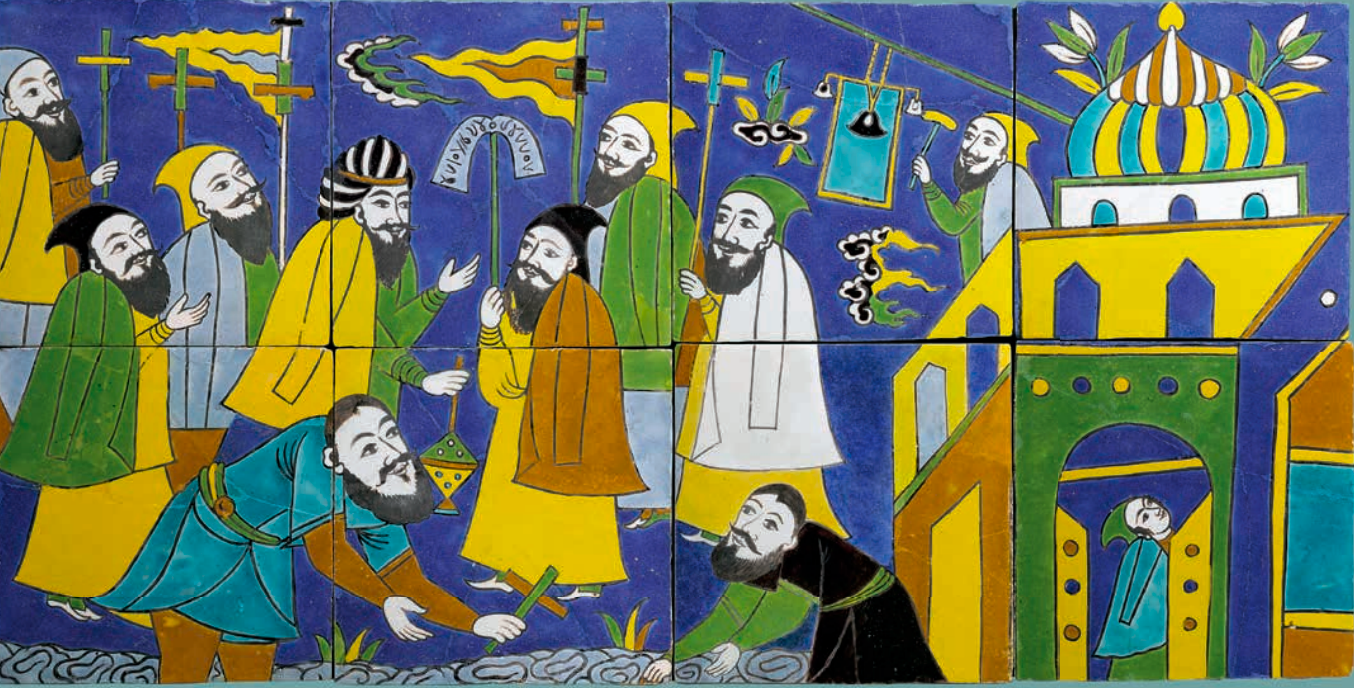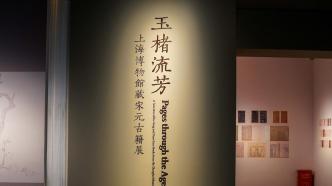
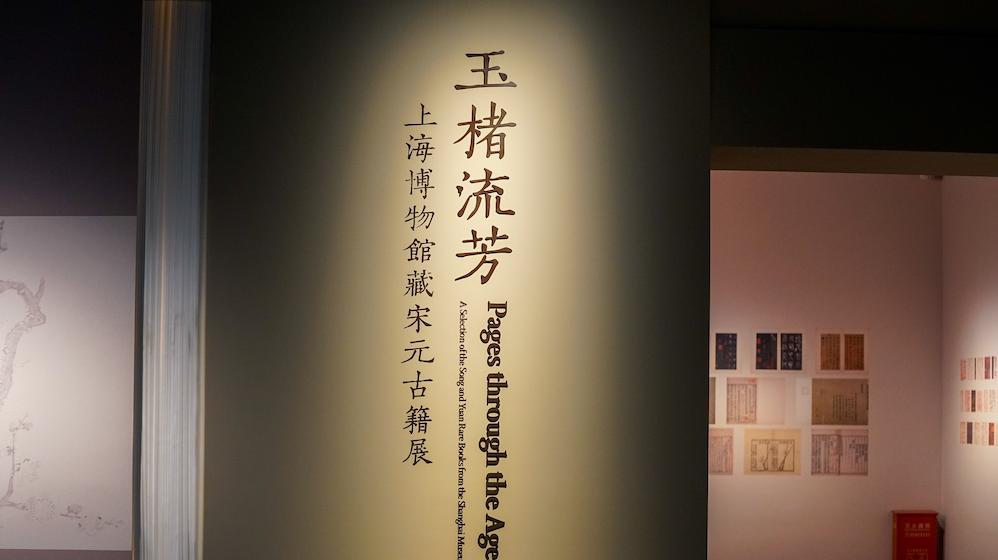
The first large-scale special exhibition of ancient books since the establishment of the Shanghai Museum - "Jade Chu Liufang: Song and Yuan Ancient Books Collection in Shanghai Museum" officially opened today (May 15). The exhibition exhibits 66 ancient books from the Song and Yuan Dynasties under the box at the Shanghai Museum, including two rare Northern Song manuscripts "Miaofa Lianhuajing", Wu Hufan's old collection of Song periodicals "Plum Blossoms" and "Wang Wengong Collection", Song Dynasty Rubbings "Lanting Continued Tie", the rarest and Xiuneisi's "Chunhua Pavilion Tie", etc. About half of the exhibits were selected into the "National List of Precious Ancient Books" and "Shanghai List of Precious Ancient Books", among which there are many rare "National Treasure" level treasures or unique copies.
The Paper saw at the scene that the exhibition was divided into three types of manuscripts, engraved editions, and rubbings, and was divided into three sections: "Beautiful calligraphy", "Brightness of ancient trees", and "Bao Tuo Fax". As we all know, there are very few surviving Song editions. In fact, the Yuan version is less than the Song version. The Song and Yuan ancient books exhibited this time can be described as rare and precious. The exhibition was also described as "a house full of gold".

exhibition site
7 manuscripts handed down from ancient times, the earliest one is thousands of years ago
Documents handwritten and transcribed are generally called manuscripts before the Song Dynasty, and manuscripts after the Yuan Dynasty. The first part, "Beautiful Calligraphy", exhibits 7 manuscripts handed down from the Song Dynasty, of which 5 are dated and 2 are not dated. Restricted by the production method, manuscripts are far less extant than printed editions, so they are especially precious. Most of the extant written scriptures are unearthed in Dunhuang, and 7 of them are precious handed down in the Shanghai Museum.
The earliest exhibits in this exhibition are in this unit. In the sixth year of Kaibao in the Northern Song Dynasty (AD 973), a man named Du Yu copied ten "Miaofa Lotus Sutra" on porcelain blue paper with gold powder and silver powder. , 1050 years ago.
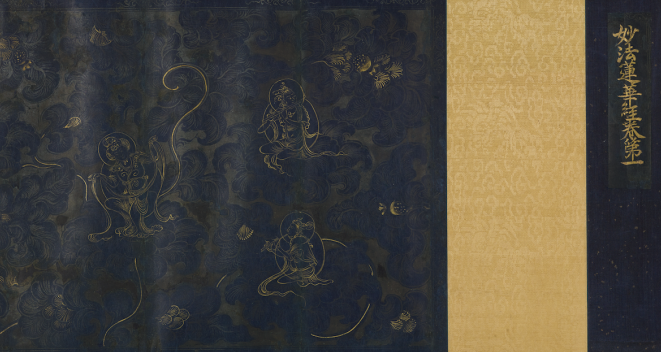
"Miaofa Lotus Sutra" (Later Qin Dynasty) translated by Kumarajiva, the sixth year of Kaibao in the Northern Song Dynasty (973) Du Yu's manuscript
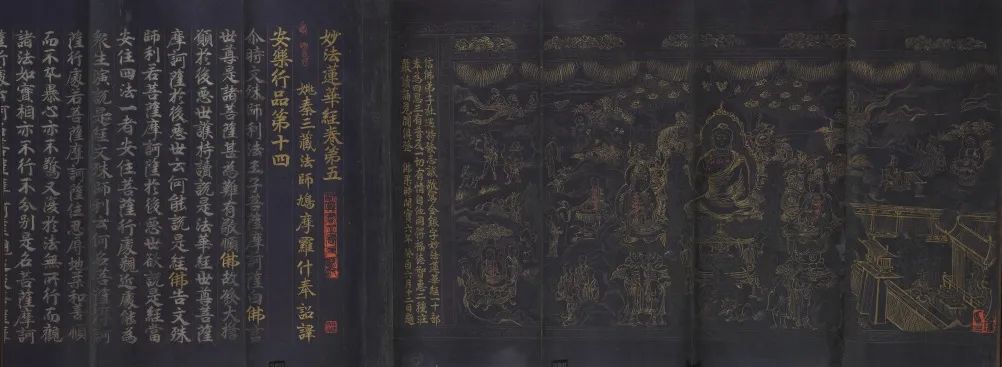
"Miaofa Lotus Sutra" (Later Qin Dynasty) translated by Kumarajiva, the sixth year of Kaibao in the Northern Song Dynasty (973) Du Yu's manuscript
The Lotus Sutra for short is the Lotus Sutra, which is an important classic of Mahayana Buddhism. Kumarajiva's Chinese translation is the most popular. Since the Tang Dynasty, seven volumes have been handed down. The two fragments of scrolls collected by Shanghai Museum are respectively stored in the Buddhist paintings and inscriptions at the end of the scroll and Juan 5. One is mounted on a scroll, and the other is converted into a folded scripture. The word "Buddha" is written with gold powder, and the rest of the text and the end title are written with silver powder. One of the Buddhist paintings in front of the scroll is a picture of preaching, and the other is a picture of jiyuetian.

exhibition site
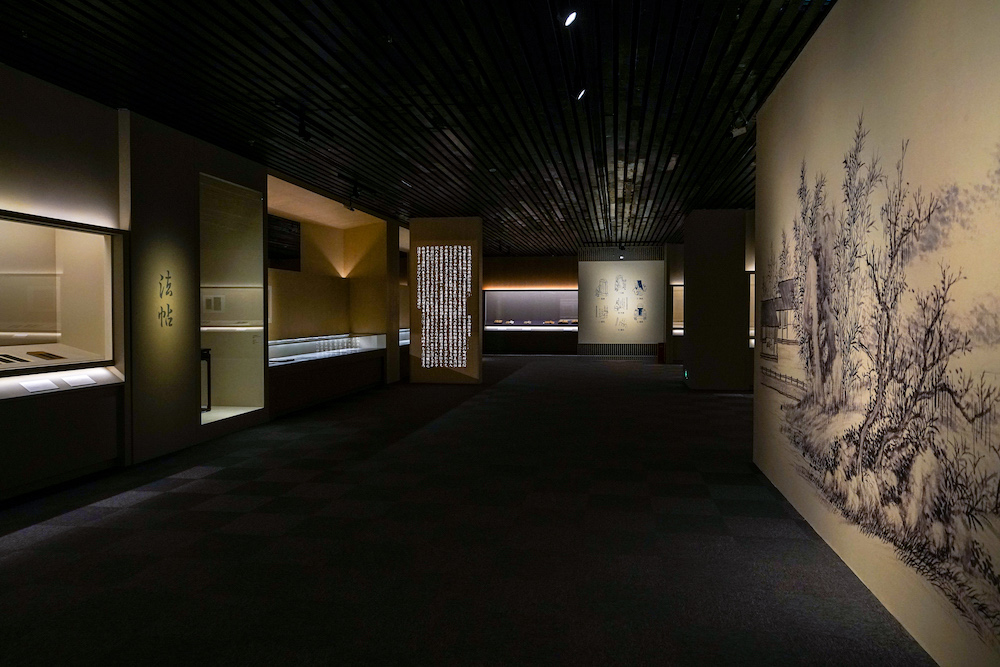
exhibition site
"This exhibit is not only exquisitely crafted after writing with gold and silver powder, but also exquisitely decorated. For these manuscripts, we can not only study their academic value, edition value, but also appreciate their calligraphy art." Shanghai Museum Associate Research Center Chen Cai said.
15 block-printed editions of the Song Dynasty in the library
Books printed with engraving blocks are called engraved editions. In the second part, "Glory from Ancient Trees", a total of 34 blocks of Song and Yuan editions are exhibited, which are divided into two units: Song edition and Yuan edition. The Song Edition unit exhibits 15 block-printed editions of the Song Dynasty collected by the Shanghai Museum. It is worth mentioning that there are a total of 15 Song engravings in the collection of Shanghai Expo, and this time the Song engravings are all out.
According to reports, in this part, the earliest exhibits published are the "Leifeng Pagoda Sutra" published in the eighth year of Kaibao in the Northern Song Dynasty, that is, in 975 AD. The famous zero volumes of "Zhaocheng Jinzang", "The Plum Blossoms" and "Wang Wengong Anthology" are all exhibited in this unit. "Leifeng Pagoda Sutra", "Plum Blossom Joy Divine Genealogy", "Huaihai Layman's Long and Short Sentences", "Houcun Layman's Collection" and so on were all inscribed poems and accompanied by pictures by collectors during the Republic of China, and they were all re-framed, which is very luxurious. However, "Mr. Guaiya's Collected Works" and "Xie Youpan's Collected Works" are both unique and uncut editions, which can be regarded as the top grade among the engraved editions of Song Dynasty.
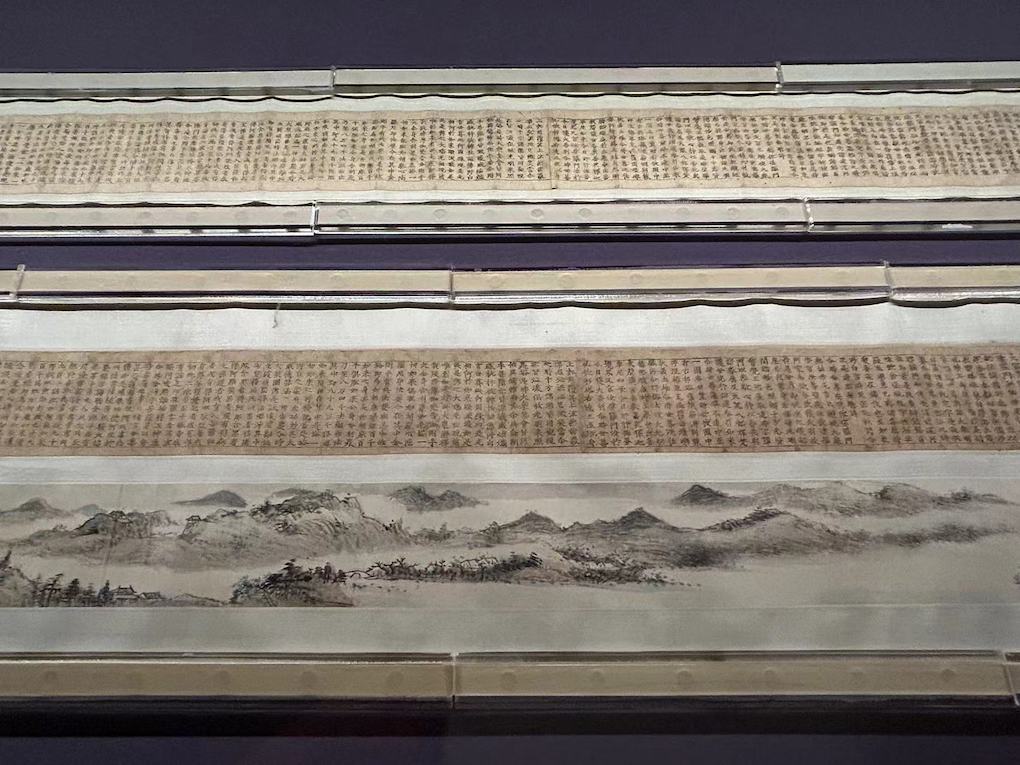
"Leifeng Pagoda Sutra"
Among them, the "Leifeng Pagoda Sutra" was engraved by Qian Chu, king of Wuyue, and hidden among the bricks of the Leifeng Pagoda in Hangzhou. In 1924, the Qiulei Peak Pagoda collapsed, and the "Precious Casket Printing Sutra" in the scripture bricks was discovered. The font style of this scripture scroll is similar to that of the Wei stele. There is Chen Zengshou’s inscription and supplementary picture at the front of the volume. The first section is titled: "Wuyue Huangfei Pagoda Collection, Jiazi Autumn September, Chen Zengshou." state". The content of the scripture volume is divided into three parts: the first volume has three lines of thirty-seven characters, the second is "Li Buddha Picture", and then the scriptures, the title is two lines and eighteen characters.

"The Divine Spectrum of Plum Blossoms" (Song) Song Boren Series Block-printed version of Jinhua Shuangguitang in the second year of Jingding in the Southern Song Dynasty (1261)

"The Divine Spectrum of Plum Blossoms" (Song) Song Boren Series Block-printed version of Jinhua Shuangguitang in the second year of Jingding in the Southern Song Dynasty (1261)

"The Divine Spectrum of Plum Blossoms" (Song) Song Boren Series Block-printed version of Jinhua Shuangguitang in the second year of Jingding in the Southern Song Dynasty (1261)

"The Divine Spectrum of Plum Blossoms" (Song) Song Boren Series Block-printed version of Jinhua Shuangguitang in the second year of Jingding in the Southern Song Dynasty (1261)

"The Divine Spectrum of Plum Blossoms" (Song) Song Boren Series Block-printed version of Jinhua Shuangguitang in the second year of Jingding in the Southern Song Dynasty (1261)
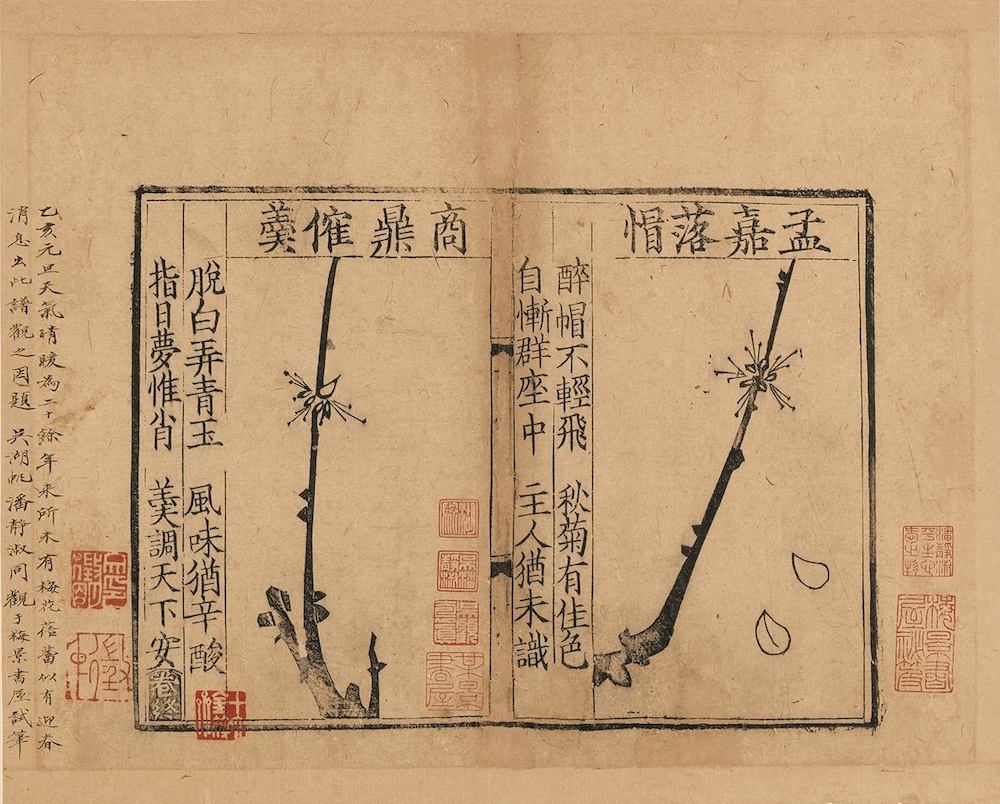
"The Divine Spectrum of Plum Blossoms" (Song) Song Boren Series Block-printed version of Jinhua Shuangguitang in the second year of Jingding in the Southern Song Dynasty (1261)
The second volume of "Plum Blossom Joy Divine Spectrum", an isolated edition published in Song Dynasty, contains 100 pictures of plum blossoms in different postures according to the eight stages of plum blossom growth, and each picture is accompanied by a title and a five-character poem. This book has inscriptions and postscripts by Huang Pilie, Qian Daxin and many other famous writers. Wu Hufan re-mounted it and changed it to folded and folded. He asked the contemporaries to write poems and lyrics and draw five pictures of plum blossoms.

"Wang Wengong Collection" (Song Dynasty) written by Wang Anshi, Southern Song Dynasty Shaoxing Longshu County zhai engraved official paper print, donated by Wang Nanping and Fang Shuyan
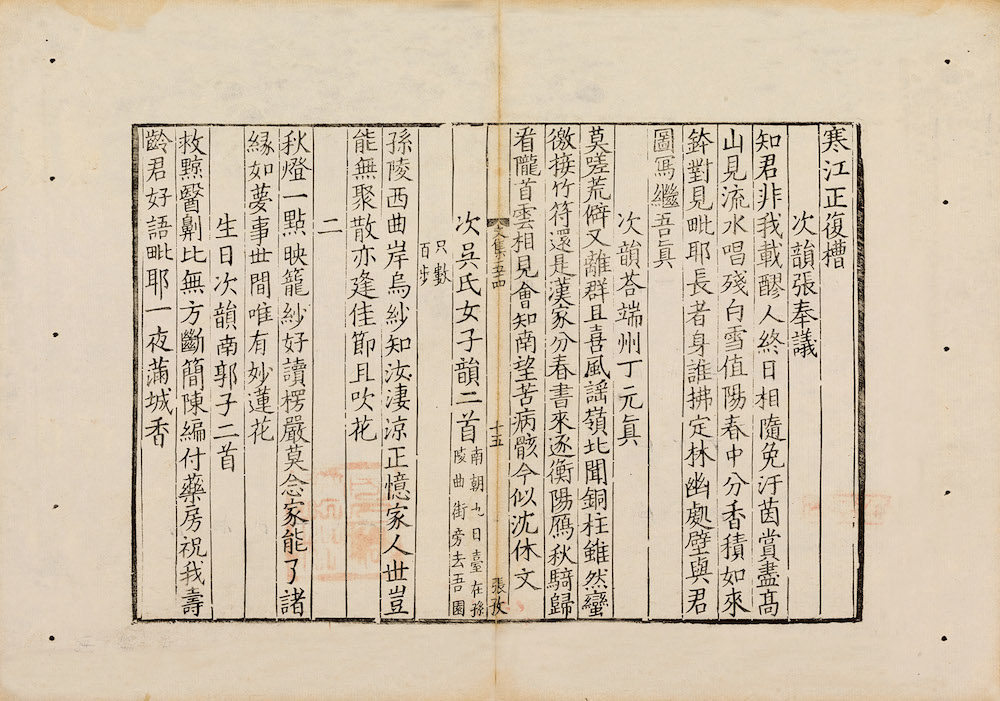
"Wang Wengong Collection" (Song Dynasty) written by Wang Anshi, Southern Song Dynasty Shaoxing Longshu County zhai engraved official paper print, donated by Wang Nanping and Fang Shuyan
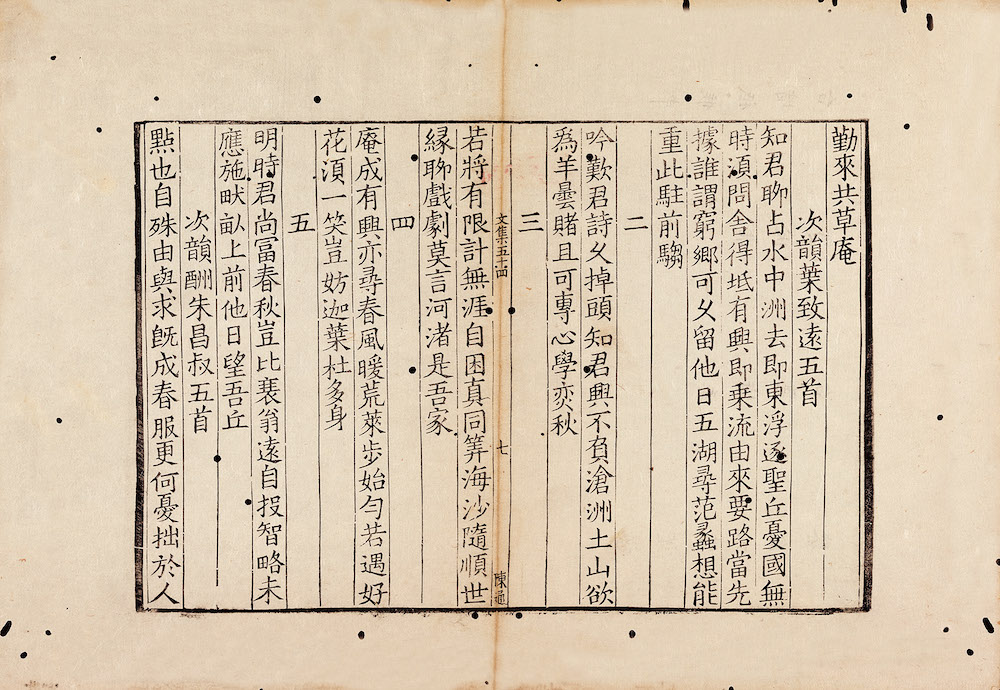
"Wang Wengong Collection" (Song Dynasty) written by Wang Anshi, Southern Song Dynasty Shaoxing Longshu County zhai engraved official paper print, donated by Wang Nanping and Fang Shuyan

"Wang Wengong Collection" (Song Dynasty) written by Wang Anshi, Southern Song Dynasty Shaoxing Longshu County zhai engraved official paper print, donated by Wang Nanping and Fang Shuyan
The only domestic copy of "Wang Wengong Collection" is the earliest surviving collection of Wang Anshi's collection. This edition was previously collected by the Imperial Palace of the Qing Dynasty. According to reports, there are two fragments of this book at home and abroad, 72 volumes of the Shanghai Museum, and 70 volumes in the collection of the Japanese Imperial Household Agency. The combination of the two volumes can just complement the whole book, and a photocopy has been published in the world.
The 72 volumes of "Wang Wengong Collection" collected by the Shanghai Museum appeared in Hong Kong bookshops in the early 1960s. Mr. Xu Senyu and Xie Zhiliu entrusted Wang Nanping, who lived in Hong Kong, to buy it back to the motherland, and it was preserved in the Shanghai Museum.

"Fan Wenzheng Public Collection" (Song) written by Fan Zhongyan, the first year of Yuan Tianli (1328) Fan's family of praise and virtues, Sui Hantang block edition
This unit exhibits 19 block-printed editions from the Yuan Dynasty collected by the Shanghai Museum, including Rites and Rites, Biography of Yue Fei in Song Dynasty, Poems of Famous Sages in Yue Zhongwu Temple, Economic Wenheng, Fan Wenzheng Public Collection, etc. Among them, "Fan Wenzheng Gong Ji" and "Bie Ji" collected Fan Zhongyan's Fu, Poems and Discourses, Discussions, Praises, Praises, Steles, Tables, Statements, Zhazi and other articles. This old collection of Pan Zuyin Pang Xizhai was exhibited in the "Wuzhong Literature Exhibition" held by the Suzhou Library in 1937.
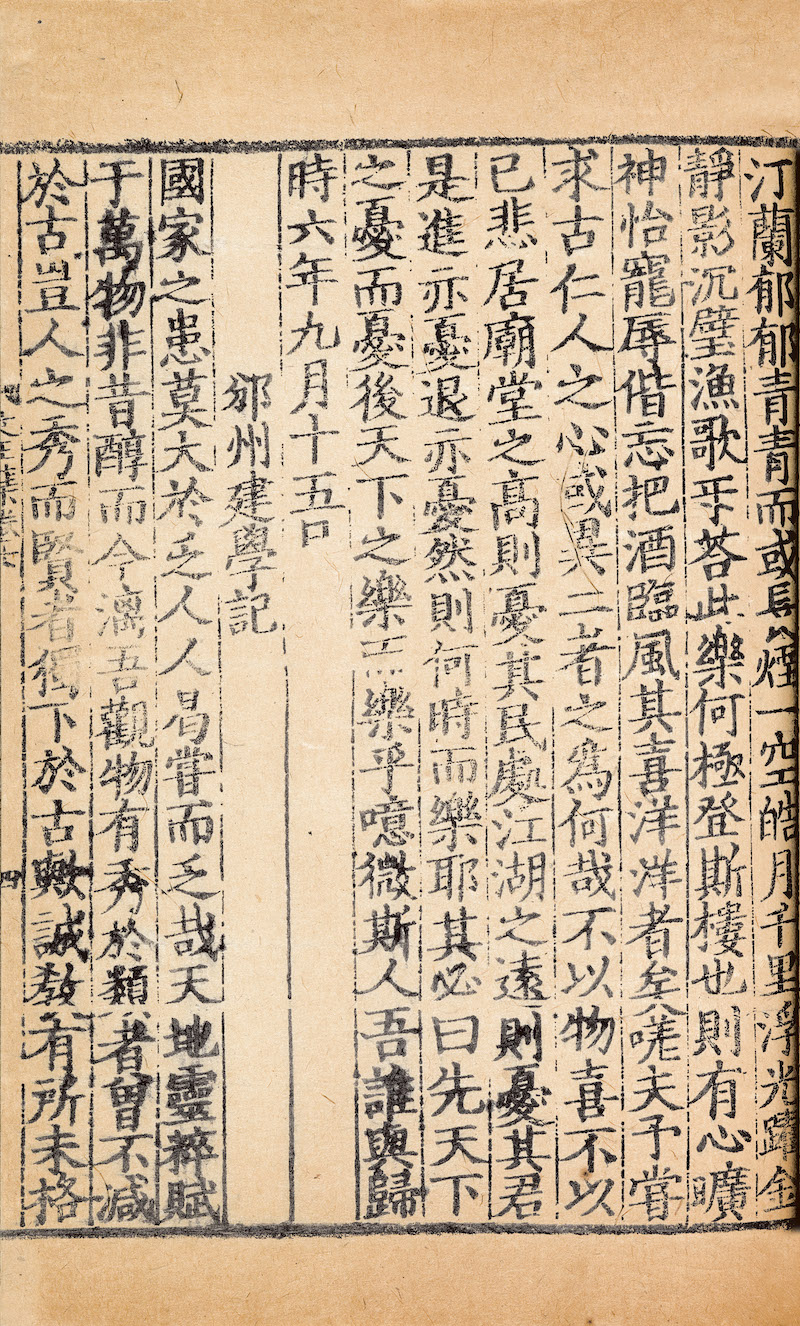
"Fan Wenzheng Public Collection" (Song) written by Fan Zhongyan, the first year of Yuan Tianli (1328) Fan's family of praise and virtues, Sui Hantang block edition
This exhibition exhibits the exhibit labels from 1937, and the audience can also see Fan Zhongyan's famous "Yueyang Tower" in the exhibition hall, and experience his home country of "worrying about the world first, and enjoying the world later". feelings.
The rarest edition of "Chunhua Ge Tie" will be exhibited after 20 years, and the "Xiu Nei Si edition" will be unveiled for the first time
Rubbings are ink books rubbed on stone tablets and woodblocks with paper. The third part "Bao Tuo Fax" exhibits a total of 25 rubbings of Song Dynasty. Famous products such as this book and Shunei Si book are all exhibited in this unit.
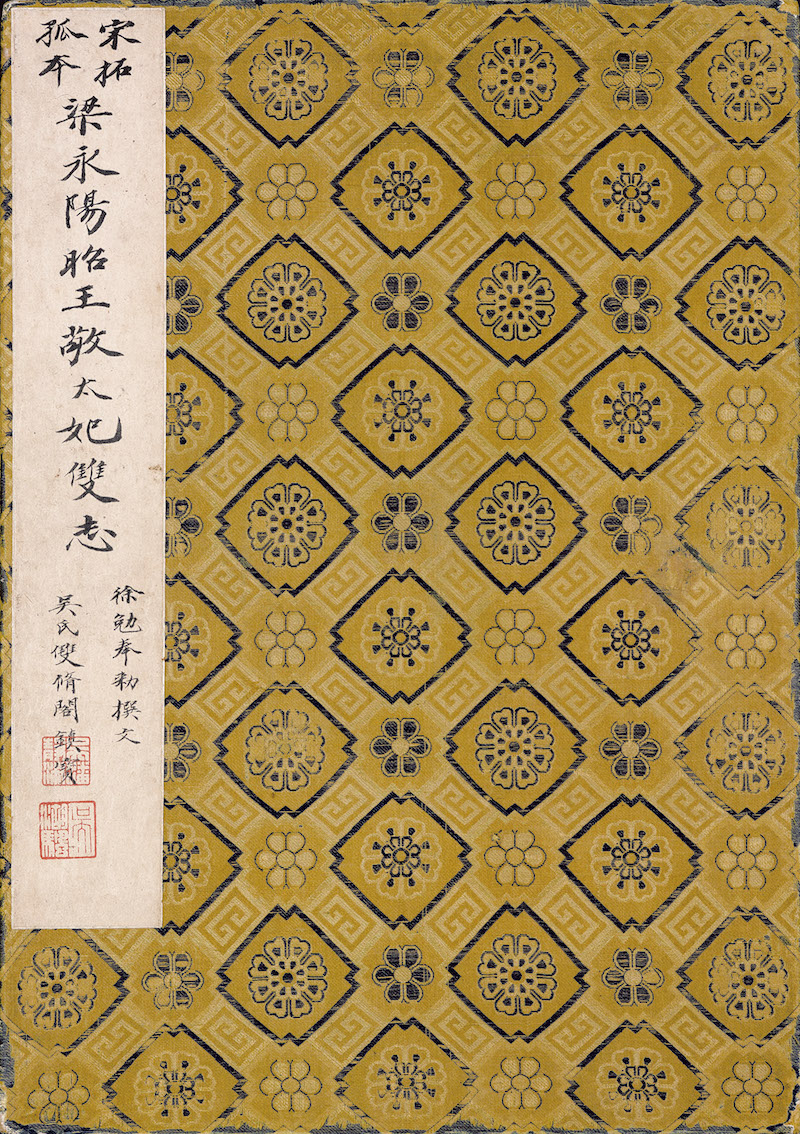
Epitaph of Xiao Fu and Concubine Jing
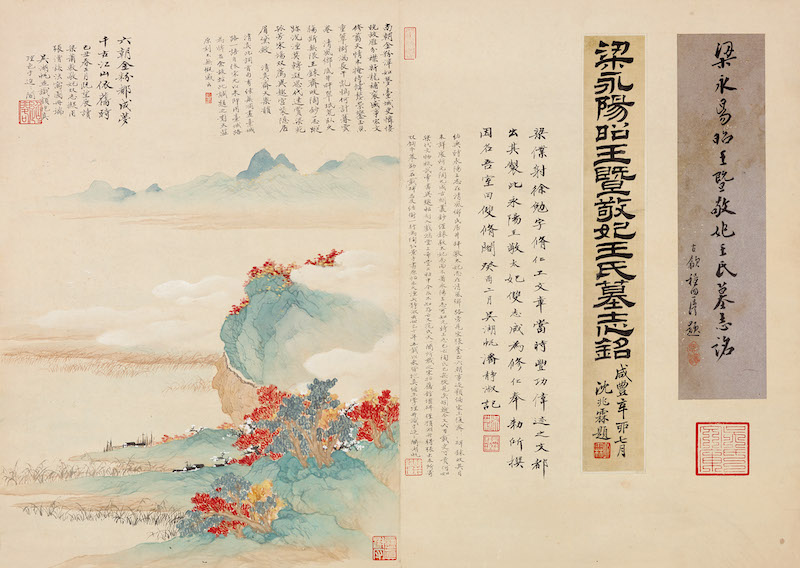
Epitaph of Xiao Fu and Concubine Jing
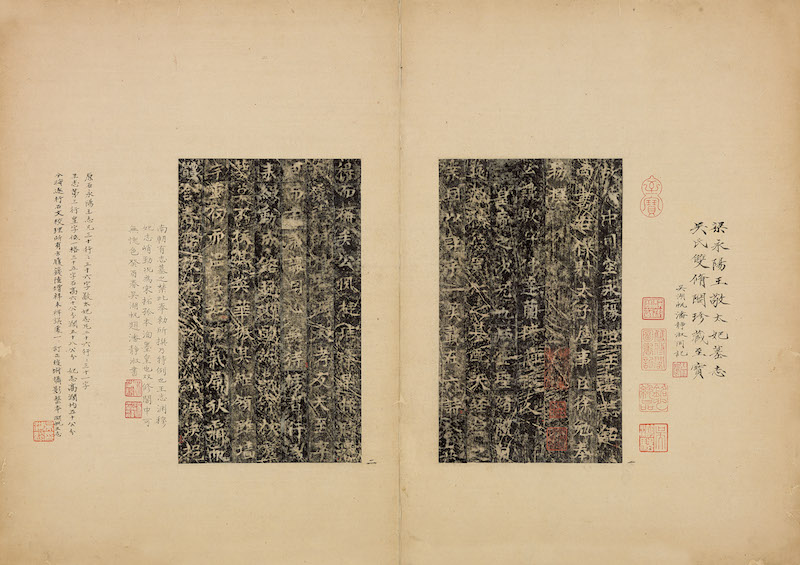
Epitaph of Xiao Fu and Concubine Jing
The epitaph of Liang Xiaofu and Concubine Jing, an isolated copy by Song Tuo, is known as one of Wu Hufan's "Four Treasures of Cultural Relics". This book is a unique copy handed down from generation to generation. It was handed over to Liu Zijing during the Daoguang and Xianfeng years of the Qing Dynasty, and later to the late Qing Wumen collectors Pan Zengshou, Pan Zuyin and his son, and then to Wu Hufan. Wu Hufan used Zhang Sengyou's method to paint a frame of gold and green landscapes on the side, and wrote a poem "All the gold powder of the Six Dynasties has become a dream, and the mountains and rivers remain the same through the ages."
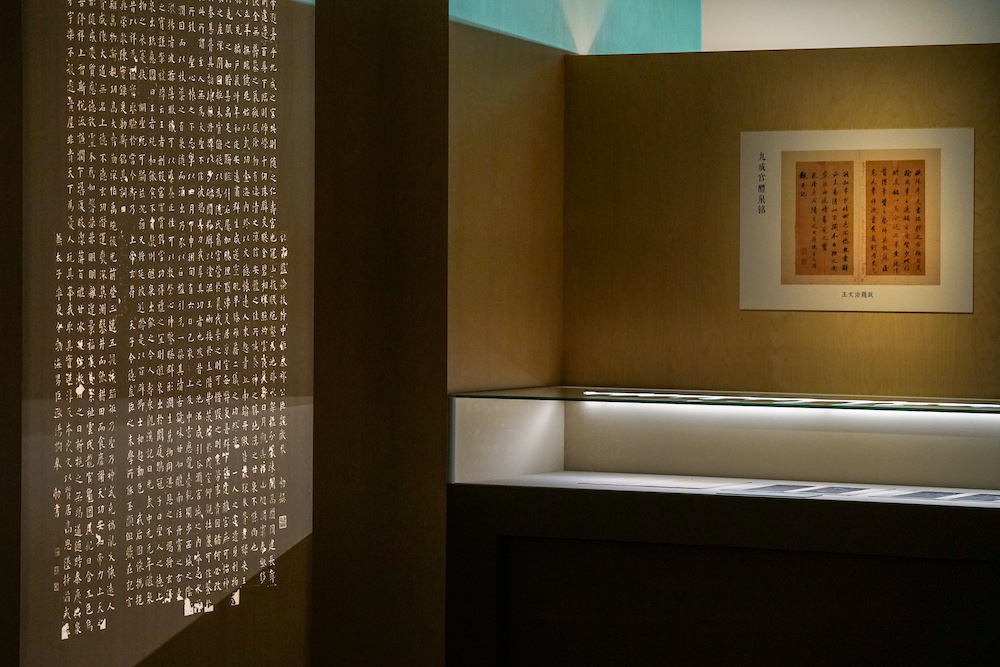
exhibition site
The "Ancestor of Fa Tie", "Chunhua Ge Tie", "The Rarest Edition" and "Xiu Nei Si Edition" collected by the Shanghai Museum were presented at the finale of the exhibition hall. "Chunhua Pavilion Tie" is Zhao Guangyi, Emperor Taizong of the Northern Song Dynasty. At the end of the third year of Chunhua, he ordered to extract the calligraphy calligraphy books of famous masters of the past from the Secret Pavilion of the Inner Palace. rubbings. It was hailed as "the ancestor of Fatie" by later generations. The full set of engraved post rubbings consists of ten volumes, half of which is dominated by the calligraphy of Wang Xizhi and Wang Xianzhi, the father and son of the "Sages of Calligraphy" in the Eastern Jin Dynasty.

"The Rarest Book" of Chunhua Ge Tie
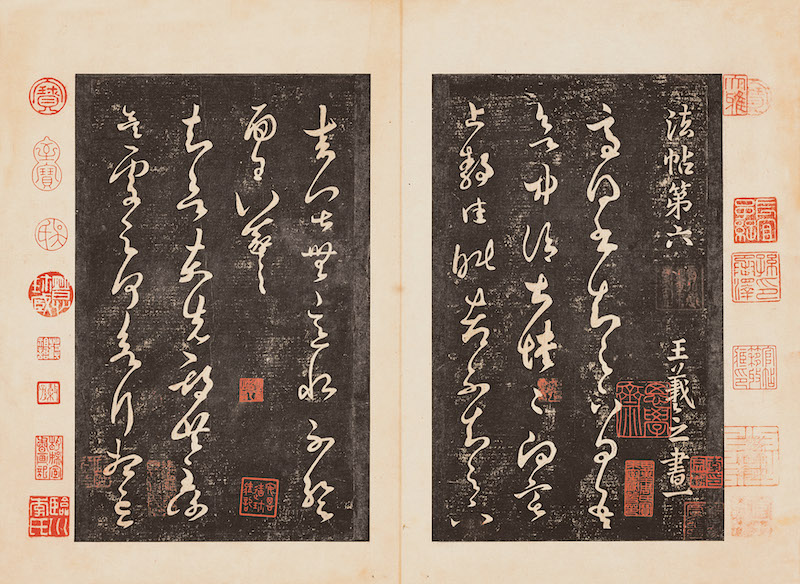
"The Rarest Book" of Chunhua Ge Tie

"The Rarest Book" of Chunhua Ge Tie
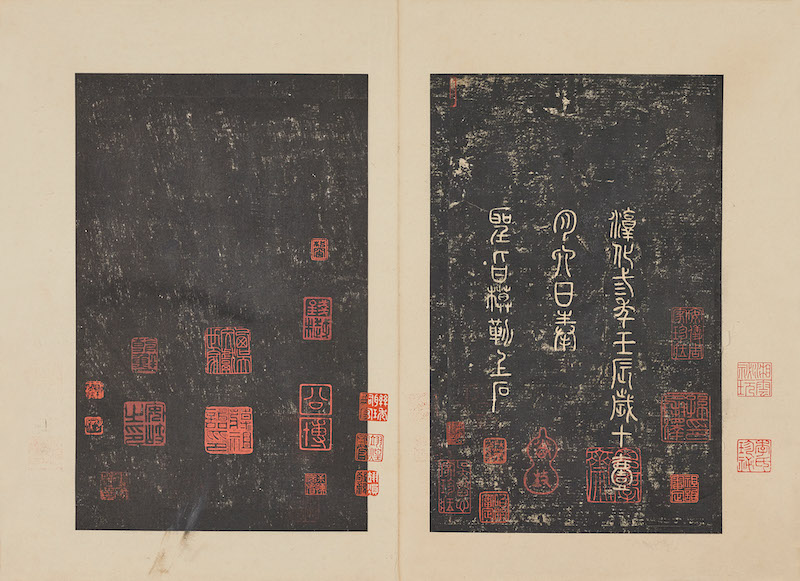
"The Rarest Book" of Chunhua Ge Tie

"The Rarest Book" of Chunhua Ge Tie
The rarest edition of "Chunhua Ge Tie" exists in four volumes (Volumes 4, 6 to 8). Among them, Juan 6 is the Northern Song ancestral copy of the "Quanzhou version" of "Chunhua Ge Tie" in the Southern Song Dynasty, and Juan 4, 7, and 8 are the only surviving original stone rubbings of ancestral carvings. Inscriptions by Wang Duo, An Qi, Wu Rongguang, etc., inscriptions by Wang Huai, etc., and inscriptions by Chu Deyi, etc.
In 2003, Shanghai Bo successfully rescued and bought back the "best copy" of the national treasure-level precious cultural relic "Chunhua Ge Tie" from the United States, which became a good story in the cultural and museum circles. To celebrate the return of "Chunhua Pavilion Tie", Shanghai Expo held a special exhibition of "Chunhua Pavilion Tie" in the same exhibition hall in 2003, displaying the most rare copies of "Chunhua Pavilion Tie" page by page. All four volumes of the book are displayed. During the exhibition period, the front of the Shanghai Museum was often surrounded by spectators, and thousands of people came to watch "Chunhua Pavilion Tie" every day. This exhibition is the first exhibition of the rarest copy of "Chunhua Ge Tie" after 20 years.
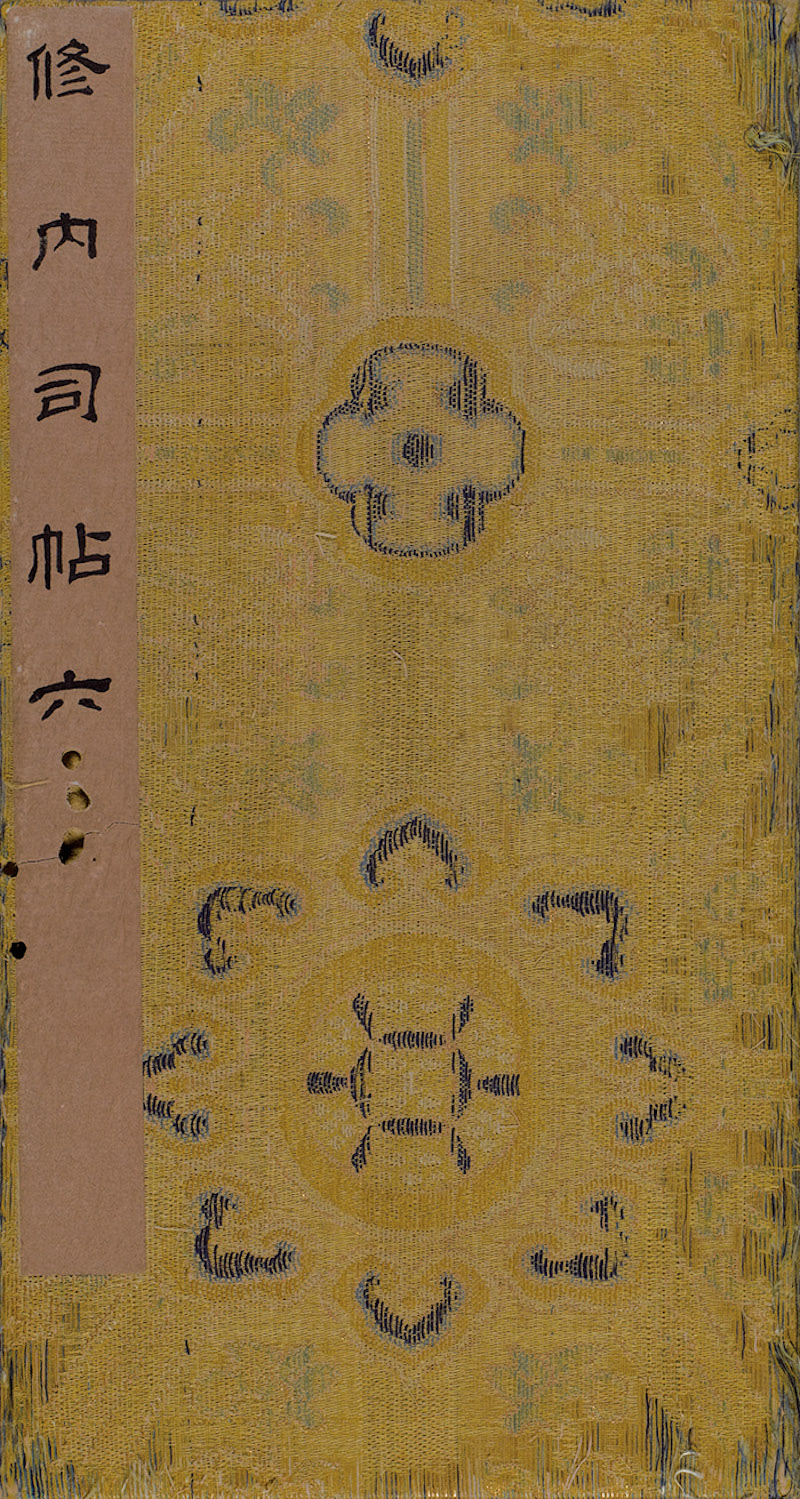
Chunhua Pavilion post "Xiu Nei Siben"

Chunhua Pavilion post "Xiu Nei Siben"

Chunhua Pavilion post "Xiu Nei Siben"
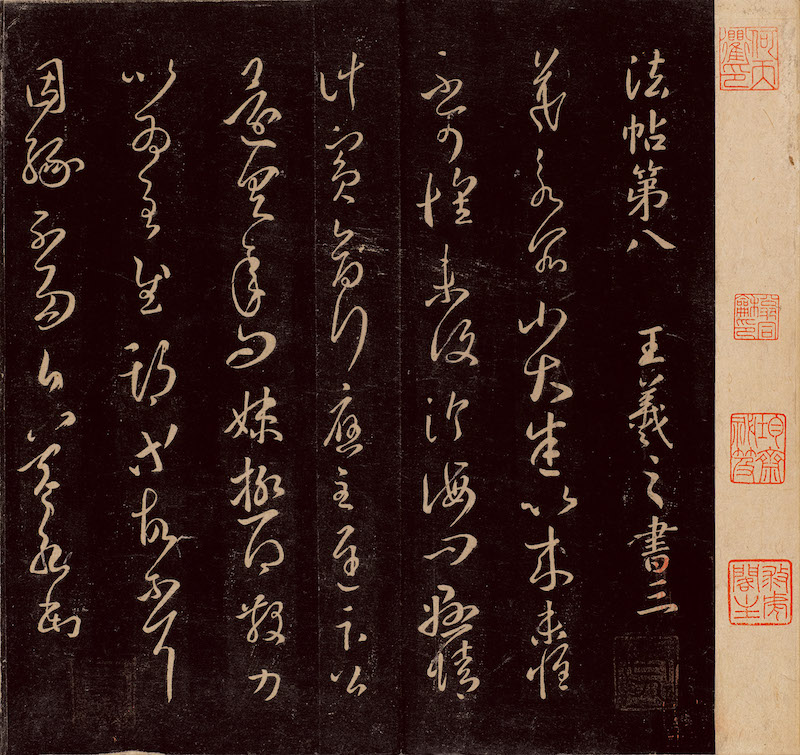
Chunhua Pavilion post "Xiu Nei Siben"
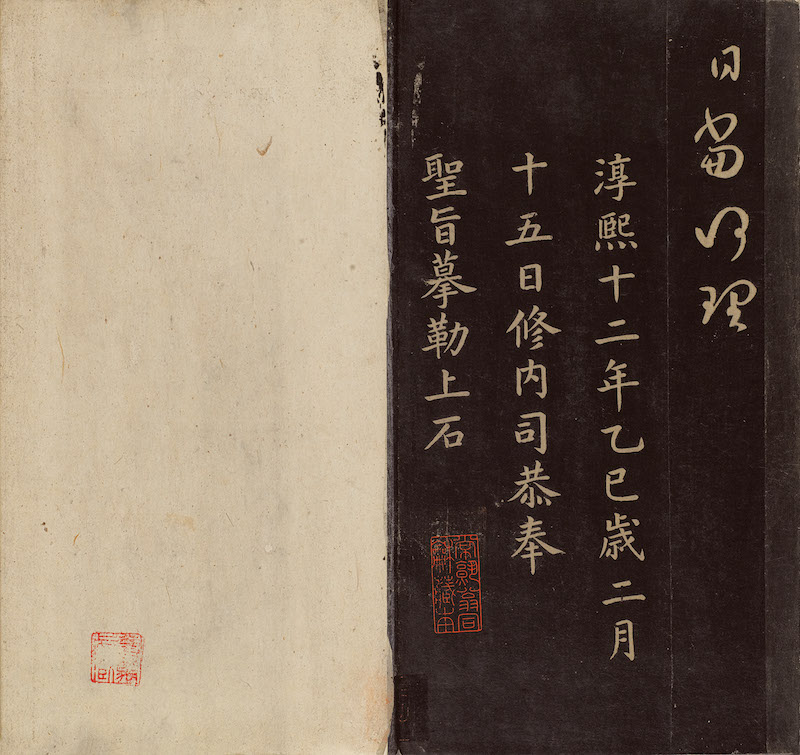
Chunhua Pavilion post "Xiu Nei Siben"
"Chunxi Ge Tie" "Xiu Nei Si Ben" is the only copy of "Chunhua Ge Tie" reprinted by the royal family in the Southern Song Dynasty. In 2004, Mr. Weng Wange transferred it to the Shanghai Museum in order to enrich the collection of the rare book "Ge Tie" in the Shanghai Museum.
According to an expert from Shanghai Bo, “Because this post was carefully selected and custom-made for the royal government, it is self-evident that the quality of the original is self-evident; in addition, the paper and ink made of stone extensions are made of exquisite materials, and the number of extensions is extremely rare. , retaining the restored quality of the stone plate to the greatest extent. Therefore, under the intensive rubbing of the ink, the rubbings are intact, just like the first test Fengying sweeping the paper, the ink is as black as lacquer at the end, and the calligraphy brushstrokes are fully revealed."
It is reported that this is also the first time that Shanghai Bo has exhibited since it purchased the "Xiu Nei Siben" of "Chunxi Pavilion Tie" in 2004.

